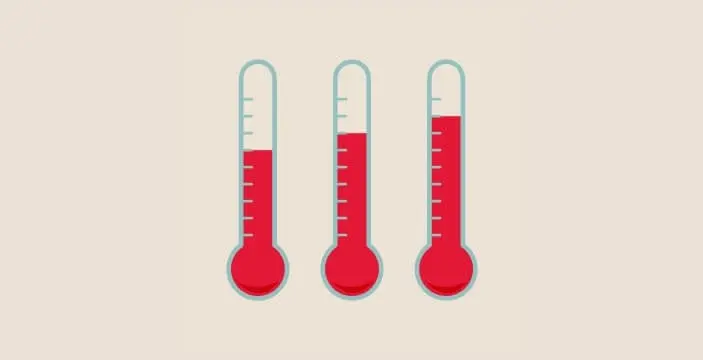This article will guide you through the common signs and symptoms of teething, helping you recognize when your baby is about to cut a tooth. We’ll also explore a variety of teething pain relief remedies and practical tips to keep your baby comfortable and happy during this transitional period. Of course, please talk to your pediatrician if you have any questions or concerns
When do babies start teething?[1,2,3]
When do babies get teeth is a common question for new parents. Most usually get their first tooth between 4 and 7 months, but every infant is different. Some may start teething as early as 3 months, while others might not see their first tooth until after their first birthday. By the time they’re 3 years old, most toddlers have a full set of 20 primary teeth — also known as baby teeth.
What order do baby teeth come in?[3]
Teething is a gradual process that occurs in several stages. Here’s a detailed guide to the expected order in which baby teeth typically appear: [1,2]
Stage 1: (0-6 months)
During this stage, your baby’s teeth are developing beneath the gums, but they are not yet visible.
Symptoms: Minimal to none, but some little ones may begin to show early signs of teething, such as increased drooling and biting.
Stage 2: (6-8 months)
Teeth: Lower central incisors (the two front teeth on the bottom)
Description: These are usually the first teeth to emerge. They can appear individually or as a pair.
Symptoms: Your baby may experience more drooling, irritability, and a desire to chew on objects. You might notice red, swollen gums where the teeth are coming in.
Stage 3: (8-12 months)
Teeth: Upper central incisors (the two front teeth on the top)
Description: These teeth often follow the lower central incisors. They can also appear individually or as a pair.
Symptoms: Similar to Stage 2, but the discomfort might be more noticeable as the upper teeth are more sensitive. Your baby might be fussy and have trouble sleeping.
Stage 4: (9-16 months)
Teeth: Lower and upper lateral incisors (the teeth next to the central incisors)
Description: These teeth typically come in pairs, one on each side of the central incisors.
Symptoms: Your baby may continue to drool and chew, and you might notice more gum swelling and irritability. Some babies may also develop a low-grade fever.
Stage 5: (12-18 months)
Teeth: First molars (the back teeth)
Description: These larger teeth can cause more significant discomfort due to their size and the pressure they exert on the gums.
Symptoms: Your baby might be more irritable and have trouble eating. They may also experience more drooling and gum swelling.
Stage 6: (16-22 months)
Teeth: Canines (the pointed teeth between the incisors and molars)
Description: These teeth are usually the next to appear, and they can come in one at a time or in pairs.
Symptoms: Your baby might experience less discomfort compared to the molars, but they can still be fussy and have swollen gums.
Stage 7: (22-33 months)
Teeth: Second molars (the back teeth that come in after the first molars)
Description: These are the last of the primary teeth to emerge, and they can cause significant discomfort due to their size and position.
Symptoms: Your baby might be more irritable, have trouble sleeping, and experience increased drooling and gum swelling. Some babies might also have a slight fever.
How long do teething symptoms last?
Teething symptoms typically begin about 3-5 days before a tooth emerges and can last for a few days after the tooth breaks through the gum.
Certain babies may experience symptoms for a longer period, sometimes up to a few weeks. The entire teething process, from the first tooth to the last, can take up to three years. During this time, you might notice periods of increased discomfort and irritability, followed by periods of relative calm.
Signs of infant teething[1,3]
How soon can infants start teething varies baby to baby, but recognizing teething symptoms can help you provide the necessary comfort and care. Here are some common signs of teething in babies:
Acting cranky
A teething baby may become fussy or irritable due to the discomfort. You’d cry too if you had tiny teeth trying to break through your gums!
Crying
Crying is a normal response to the pain and discomfort of teething. As teeth push through the gums, your baby might cry more frequently or have more intense crying spells.
Drooling
You might notice your teething baby drooling more than usual. This increased saliva production can help soothe inflamed gums.
Wanting to chew on hard things
It’s not uncommon for teething babies to develop a newfound interest in putting things in their mouths, especially hard objects and toys. Chewing on these items can help relieve the painful pressure in their gums. That’s why teething rings exist! Ensure that any objects your baby chews on are safe and clean to avoid risk of choking or infection.
Having puffy, sore gums around lumps that feel hard to the touch
Gums may become puffy and sore, and you might feel hard lumps where the teeth are about to emerge. Be gentle when touching these areas and avoid using harmful remedies like rubbing liquor on the gums, as this can be dangerous.
Experiencing a slight teething fever
A low-grade fever (around 100.4°F or 38°C) is common during teething, but a high fever over 101°F (38.3°C) or the presence of diarrhea is not. If your baby has either of these symptoms, it’s important to contact your pediatrician. For more information on how to treat and reduce your baby’s fever, you can visit our article on the subject here.
Trouble sleeping
Teething can disrupt your baby’s sleep patterns. The discomfort and pain can make it difficult for them to fall asleep or stay asleep. Try to establish a soothing bedtime routine, and consider using a cool, damp washcloth or a teething ring to help them feel more comfortable.
Changes in appetite
Some babies may lose their appetite or refuse to eat during teething due to the pain and discomfort. Others might prefer to chew on solid foods to relieve the pressure in their gums. If your baby is having trouble eating, offer them soft, cool foods like yogurt or applesauce, and ensure they stay hydrated with plenty of water.
Other common signs for how to tell if an infant is teething
Biting: Your baby might bite more frequently, especially on fingers, toys, or anything they can get their mouth on. This is their way of trying to relieve the pressure in their gums.
Ear pulling or cheek rubbing: Some babies may pull at their ears or rub their cheeks. The pain from the gums can sometimes radiate to these areas.
Facial rash: Increased drooling can lead to more moisture around the mouth and chin, which might cause a facial rash.
Baby teething remedies & pain relief tips[1,3]
This can be a challenging time, but there are several remedies and tips that can help provide infant teething relief to make the process more comfortable.
Massage your baby’s gums
Gently rub your baby’s gums with a clean finger or offer a teething ring or pacifier made of firm rubber. The pressure from the massage can help soothe the discomfort.
Try a cold teething ring or washcloth
This is often the first tip you'll hear from fellow parents on what to do for teething infants. It's straightforward and effective:
Chill a teething ring, pacifier, or wet washcloth in the refrigerator — but don’t fully freeze it. (Anything too hard can damage your child’s delicate gums.) The cool temperature can help numb the gums and reduce pain.
Offer chilled foods
If your baby is eating solids, try offering chilled foods like pureed fruits or vegetables, or even a chilled cucumber or carrot under close supervision to avoid choking. Just like with a cold teething ring, the low temperature can help numb gums for relief.
Use a cold spoon
A cold spoon can also be a useful tool for soothing your baby’s gums. Simply place a clean spoon in the refrigerator until it’s cool, and then let your baby gently press it against their gums. The cool metal can provide a soothing sensation.
Give your infant pain medicine for their teething pain
If you've wondered, "Can I give my baby TYLENOL® for teething pain?", the answer is yes! If your little one is particularly uncomfortable, you can try a pain medicine containing acetaminophen, such as Infants' TYLENOL® Dye Free Oral Suspension or Infants' TYLENOL® Oral Suspension.
Infants’ TYLENOL® temporarily relieves pain and reduces fever, making it a gentle and effective option for teething infants and toddlers. Acetaminophen is thought to work by blocking the production of pain-signaling chemicals in the brain,[4] which can help your baby feel more comfortable during the teething process. It is also gentle on the tummy, which is important for babies who may already be experiencing discomfort. Explore our dosage guide for the recommended dose of TYLENOL®. Always consult your pediatrician before giving any medication to your baby, especially if they are under 2 years old.
Keep your baby’s face clean
As mentioned earlier in this article, increased drooling can lead to a facial rash. To prevent this, keep your baby’s face clean and dry by gently patting it with a soft cloth. You can also apply a moisturizer recommended by your pediatrician to protect the skin and prevent irritation.
What to avoid[1,3]
Rub-on teething gels or liquids: Avoid using rub-on teething gels or liquids for babies less than 2 years old. Many of these products contain benzocaine, an ingredient that can cause dangerous side effects in young babies.[5]
Liquid-filled teething rings: Stay away from liquid-filled teething rings, as they may burst and pose a choking hazard.
Tying teething rings around the neck: Never tie a teething ring around your baby’s neck for easy access. This can be a choking hazard and is not safe.
Hard objects: Avoid giving your baby very hard objects to chew on, as they can damage the delicate gums and emerging teeth.
Pacifiers with liquid inserts: These can also burst and are not recommended for teething.
Additional tips for soothing a teething infant
Teething toys: Invest in a variety of teething toys that are safe and designed for teething. These can provide a distraction and help your baby relieve pressure on their gums.
Gentle bathing: A warm bath can be soothing for your baby and may help them relax, which can indirectly ease teething pain.
Comfort and cuddles: Sometimes, the best remedy is simply holding and comforting your baby. Extra cuddles and attention can help them feel more secure and less distressed.[7]
Hydration: Ensure your baby stays well-hydrated. Drinking water can help wash away excess saliva and keep the mouth and gums clean.
Gentle brushing: If your baby has any emerging teeth, gently brush them with a soft-bristled toothbrush and water. This can help keep the area clean and reduce any irritation.
If you have any questions, talk to your pediatrician
Again, if you have any concerns or if your baby’s symptoms seem severe, don’t hesitate to consult your pediatrician for additional guidance. They can provide personalized advice and help ensure that your baby is healthy and comfortable during this teething phase.



